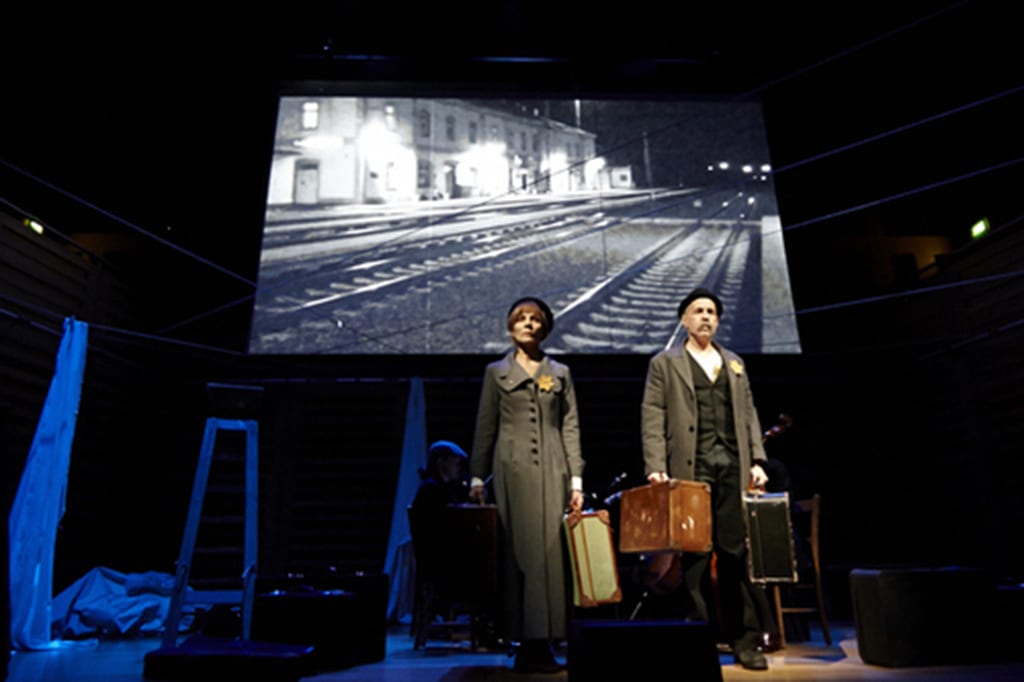As the Nazi regime’s ideology and influence became more widespread and oppressive, so did the demonization and terrorisation of the Jews.
Terezin camp was sold to those who were willing to pay as the “Fuhrer’s gift to the Jews”, a spa village where the Jews could be together, where they would be safe. However, when they arrived, those who had been deceived (or forced) there were faced with an overcrowded, disease-ridden hellhole. Over 13, 000 Jewish children passed through Terezin over the course of the Second World War, out of these only 100 survived. Drawing Life pieces together children’s artwork and poetry produced at Terezin, combined with composed live music (Curzon, Moody, Shortt, Evans and Malivojevic) and performance (Pappenheim and Sklamberg) to convey this original and insightful perspective of life within the concentration camps.
It is difficult to categorise Drawing Life, although it was promoted as a music performance, this seems reductive as music is one aspect of many within the piece. Filmed projections, movement and performed passages help communicate the appalling history of Terezin. Perhaps it is this resistance to its labelling that makes this piece so powerful – it will not adhere to our terms but defiantly stands alone.
Although the subject matter may infer that Drawing Life is all doom and gloom, this is not the case. It quickly becomes apparent that Pook, keen to avoid a 90-minute lecture on the innumerable evils of humanity, wishes to create a piece that is “reflective without being devoid of light”. It is this skillful light and shade that adds potency to the moments of painful reality. A standout example of this is “Cabaret from Hell” depicting performances put on at the camp, following the grating words of a Terezin survivor: “It was not entertainment, it was moral support”. Here Pappenheim and Sklamberg’s performances, live music and video footage come together with powerful effect – the audience are exposed to the nauseous reality of the suffering that was imposed upon these people.
Pappenheim’s performance is, in fact, superb throughout. Her effortless projection and thoughtful demeanour proves a powerful combination – the effect is hypnotic. Sklamberg deftly switches from patronising Terezin guard to terrified inmate with skill. Even the incredibly talented musicians effectively convey the overwhelming emotions of fear, grief and confusion that channel through the core of this piece. The Zemel choir are guilty of looking a little lost during their entrances onto the stage; however, this is very quickly forgiven the moment they begin to sing.
Drawing Life is a defiant and thought provoking piece of theatre. It refuses to adhere to any expectations other than its own, returning power to those that were stripped of everything but their creative voice.

